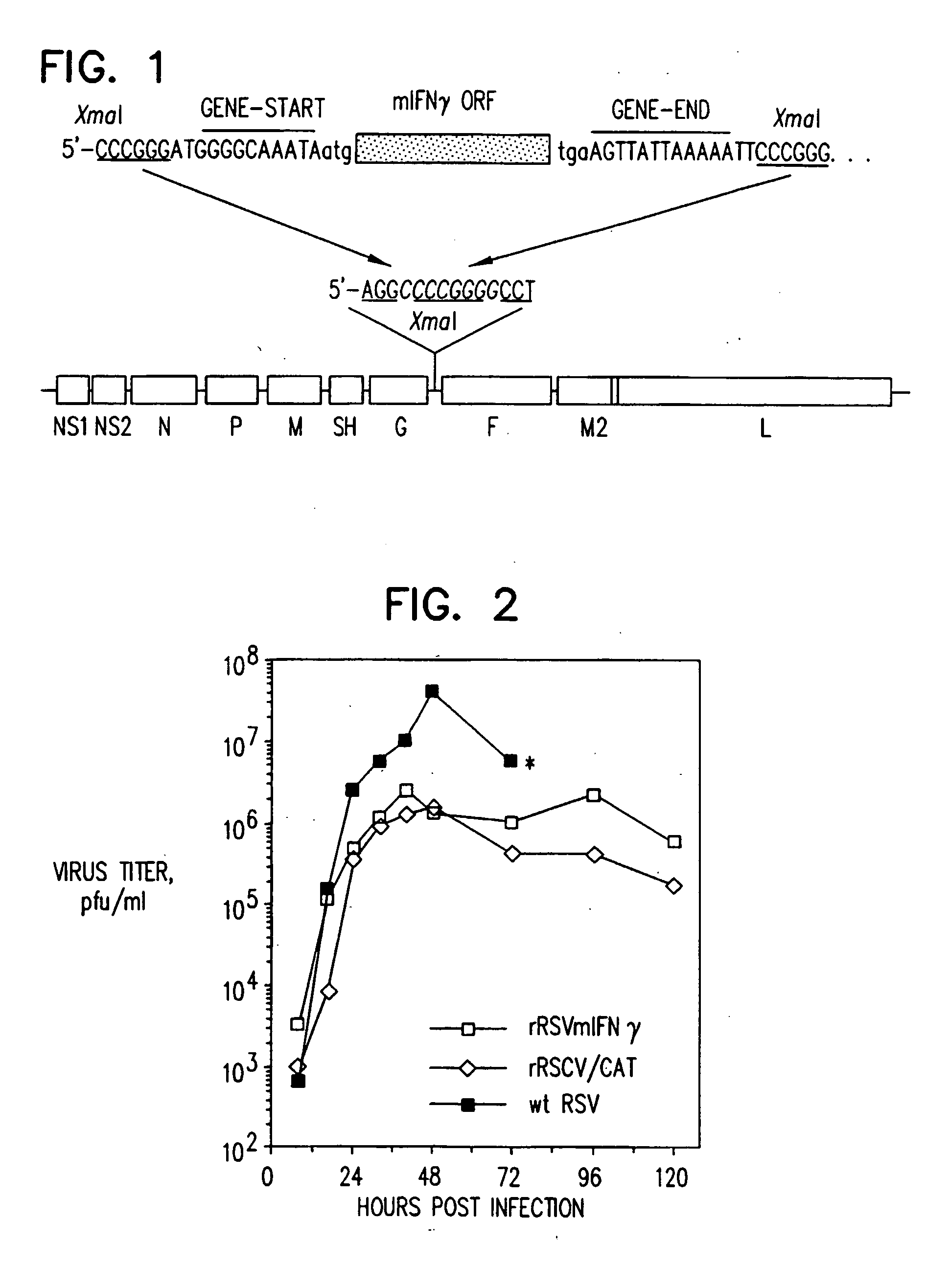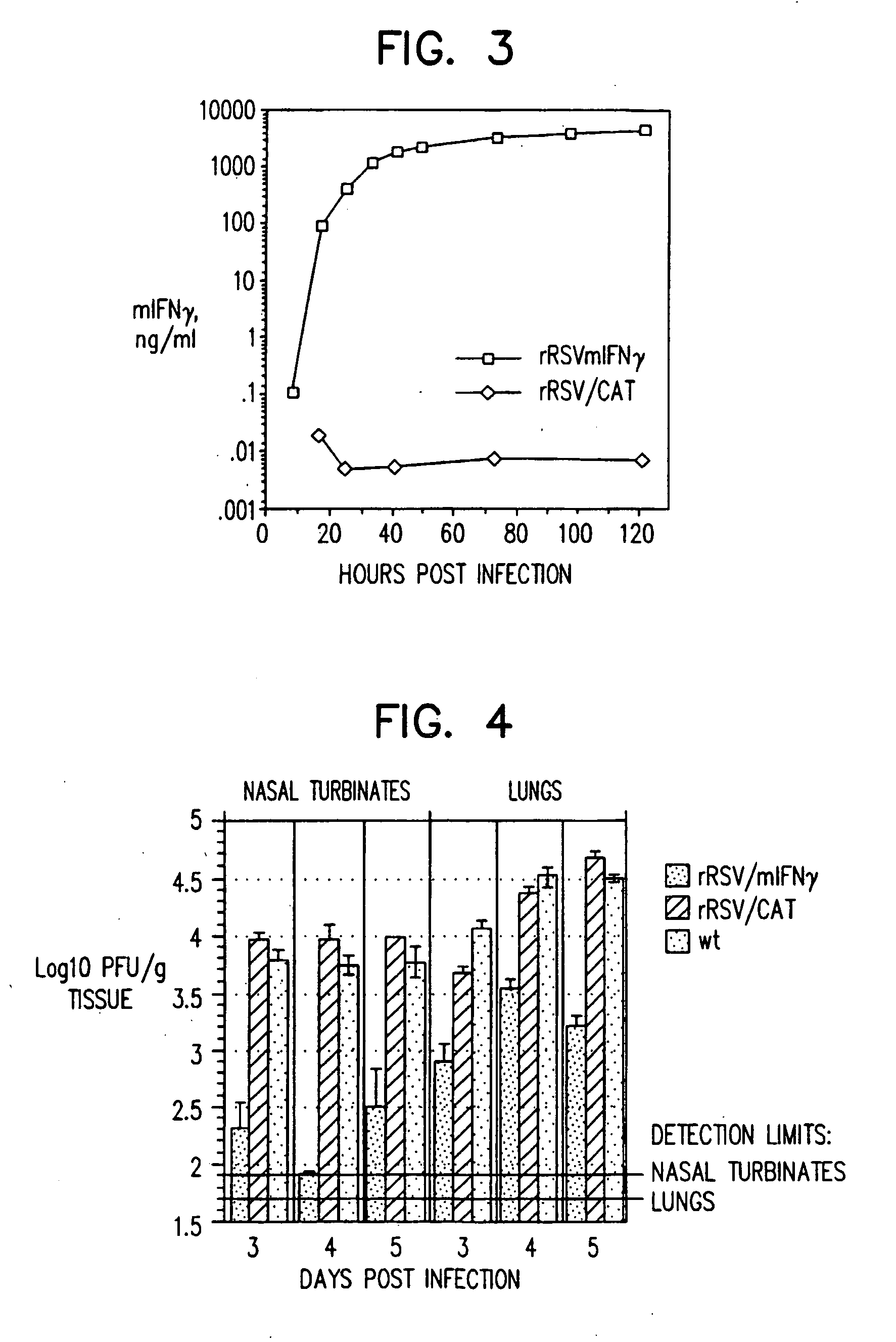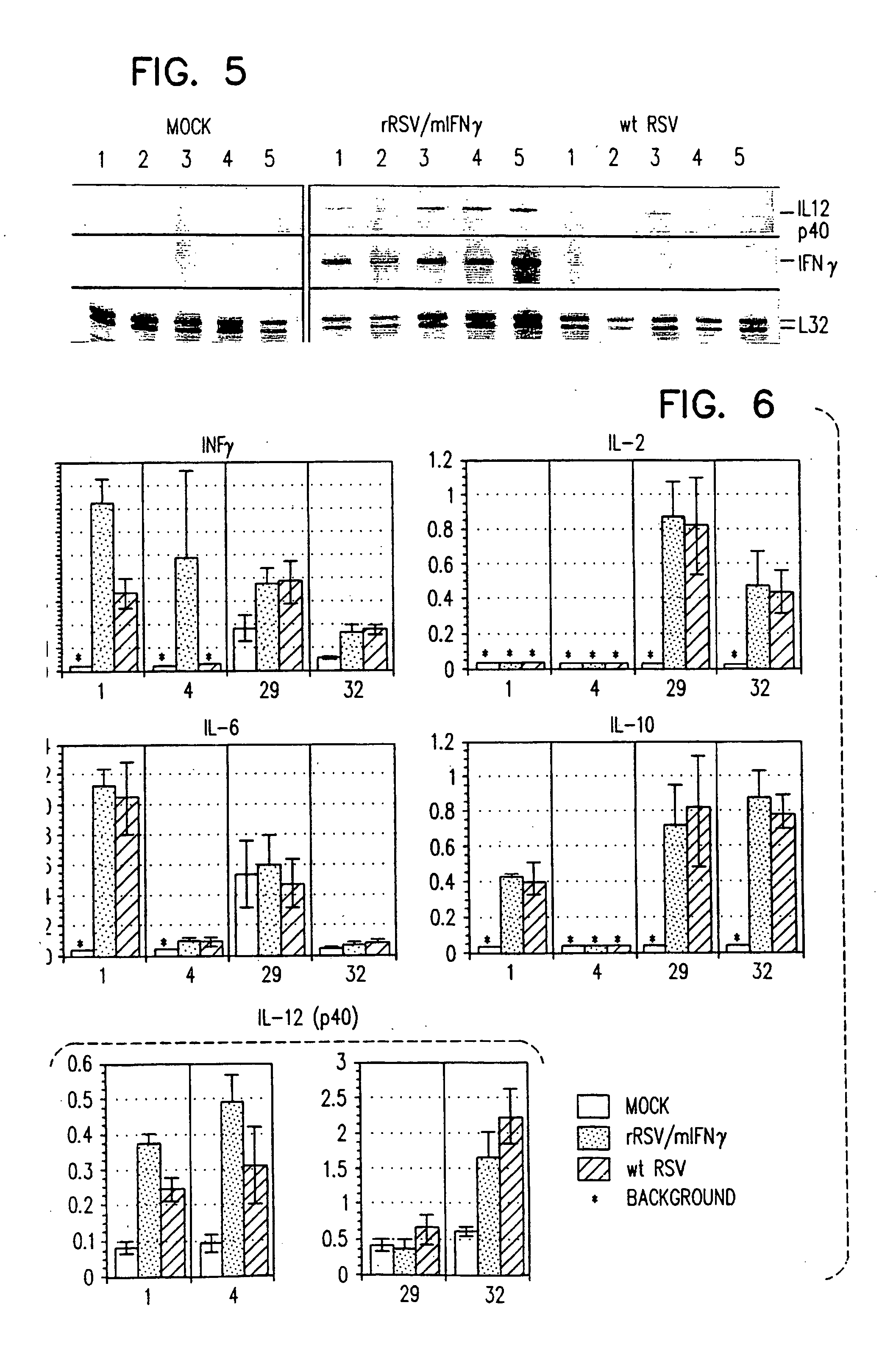Production of recombinant respiratory syncytial viruses expressing immune modulatory molecules
a technology of immune modulatory molecules and respiratory syncytial viruses, which is applied in the direction of aerosol delivery, immunological disorders, drug compositions, etc., can solve the problems of inability to transmit blood-borne viruses, inconvenient use, and inability to achieve widespread use, so as to improve the efficiency of transcription and replication, improve the effect of biological properties
- Summary
- Abstract
- Description
- Claims
- Application Information
AI Technical Summary
Benefits of technology
Problems solved by technology
Method used
Image
Examples
example i
Construction and Characterization of a Recombinant RSV Expressing Interferon Gamma
[0217] Interferon gamma (IFNγ), a type II interferon, is produced by T cells and natural killer (NK) cells and has diverse biological effects (for review, see refs. 1 and 2). IFNγ has intrinsic antiviral activity, up-regulates expression of major histocompatibility class I and II molecules, activates macrophages and NK cells, and has an important regulatory role in T helper (Th) cell proliferation. Two subsets of murine Th cells have been distinguished on the basis of the pattern of cytokine secretion: the Th1 subset, whose marker cytokines include IL-2 and IFNγ, and the Th2 subset, whose markers include IL-4, IL-5, IL-6 and IL-10. IFNγ preferentially inhibits the proliferation of Th2 cells, thus favoring a Th1 response.
[0218] In the present example, an infectious recombinant (r) human RSV (rRSV / mIFNγ) was constructed which encodes murine (m) IFNγ as a separate gene inserted into the G-F intergenic r...
example ii
Construction and Characterization of Recombinant RSV Encoding Murine IL-2
[0241] In the present example, a recombinant RSV was constructed containing the coding sequence of murine interleukin-2 (mIL-2) in a transcription cassette inserted into the G-F intergenic region. The recovered virus (rRSV / mIL-2) expressed high levels (up to 2.8 μg / ml) of mIL-2 in cell culture. Replication of rRSV / mIL-2 in vitro was reduced up to 13.6-fold compared to wild type (wt) recombinant RSV (rRSV), an effect that was due to the presence of the foreign insert but was not specific to mIL-2. Replication of the rRSV / mIL-2 virus in the upper and lower respiratory tracts of BALB / c mice was reduced up to 6.3-fold, an effect that was specific to mIL-2. The antibody response, including the levels of RSV-specific serum IgG1, IgG2a, IgA, and total IgG, and the level of protective efficacy against wt RSV challenge were not significantly different from those of wt rRSV. Analysis of total pulmonary cytokine mRNA iso...
example iii
Construction and Characterization of Recombinant RSV Encoding Murine Granulocyte-Macrophage Colony Stimulating Factor (mGM-CSF)
[0264] In the present example, the effect of coexpression of murine GM-CSF (mGM-CSF) by RSV on the immune response to RSV in mice was determined. Following the general strategy described above for the rRSV / mIFNγ and rRSV / mIL-2 viruses, an antigenomic cDNA was constructed which contained the mGM-CSF gene under the control of RSV gene-start and gene-end signals inserted in the G-F intergenic region. This antigenomic cDNA was used to recover the rRSV / mGM-CSF virus. This recombinant virus was moderately attenuated for growth in cell culture and replicated with an efficiency which was essentially indistinguishable from that of the rRSV / CAT, rRSV / IL-2 and rRSV / mIFNγ viruses. When cultured cells were infected with the rRSV / mGM-CSF virus, high levels of mGM-CSF were secreted into the culture medium. When inoculated into BALB / c mice, the rRSV / GM-CSF virus was margin...
PUM
| Property | Measurement | Unit |
|---|---|---|
| Current | aaaaa | aaaaa |
| Current | aaaaa | aaaaa |
| Temperature | aaaaa | aaaaa |
Abstract
Description
Claims
Application Information
 Login to View More
Login to View More - R&D
- Intellectual Property
- Life Sciences
- Materials
- Tech Scout
- Unparalleled Data Quality
- Higher Quality Content
- 60% Fewer Hallucinations
Browse by: Latest US Patents, China's latest patents, Technical Efficacy Thesaurus, Application Domain, Technology Topic, Popular Technical Reports.
© 2025 PatSnap. All rights reserved.Legal|Privacy policy|Modern Slavery Act Transparency Statement|Sitemap|About US| Contact US: help@patsnap.com



